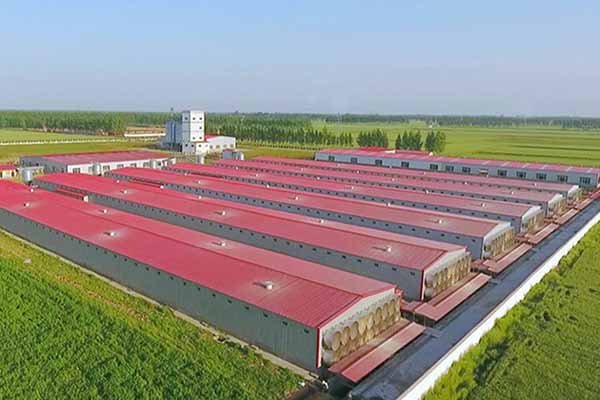The Impact of Temperature Control on Egg Production in Uganda Chicken Farms
Time : 2025-04-25
Temperature control is a critical factor that can significantly impact the efficiency and productivity of chicken farms in Uganda. With the ever-growing demand for eggs, it’s essential to understand how temperature affects egg production. In this article, we’ll delve into the importance of maintaining the right temperature in chicken farms and how it can influence the overall productivity and health of the flock.
Understanding the Basics
First, let’s establish the basics. Chicken, like many other animals, are warm-blooded creatures that need to maintain a constant body temperature to function optimally. This is especially true for egg-laying hens, as their reproductive cycle is highly sensitive to temperature changes.
The Ideal Temperature Range
The ideal temperature range for egg production in chicken farms typically falls between 18°C to 24°C (64°F to 75°F). This range is considered optimal because it ensures that the hens are comfortable, which in turn leads to higher laying rates and healthier birds.
The Impact of High Temperatures
When temperatures rise above the ideal range, several negative effects can occur:
– Reduced Egg Production: Hens may lay fewer eggs as their body temperature increases, leading to a decrease in overall productivity.
– Increased Water Consumption: Higher temperatures lead to increased water consumption, which can strain the water supply in the farm.
– Heat Stress: Heat stress can cause hens to become stressed, leading to a decrease in laying performance and increased susceptibility to disease.
The Impact of Low Temperatures
Conversely, temperatures that fall below the ideal range can also have adverse effects:
– Reduced Egg Size: Hens may lay smaller eggs as their metabolic rate decreases in colder temperatures.
– Increased Feed Consumption: To maintain body temperature, hens will consume more feed, which can increase costs.
– Reduced Eggshell Quality: Lower temperatures can also impact the quality of the eggshell, leading to increased breakage rates.
Strategies for Temperature Control
So, how can chicken farmers in Uganda ensure that their hens are living in an optimal temperature environment? Here are some practical strategies:
– Ventilation: Proper ventilation systems can help regulate the temperature inside the chicken house. Fans and natural ventilation can be used to circulate air and dissipate excess heat.
– Insulation: Insulating the chicken house can prevent heat loss during colder months and reduce the amount of heat that enters the house during hot weather.
– Heat Sources: In colder climates, heat sources like brooders or electric heating elements can be used to maintain the ideal temperature.
– Cooling Systems: During hot seasons, cooling systems such as evaporative coolers or misting systems can be used to lower the temperature inside the chicken house.
Monitoring and Adjusting
Monitoring the temperature inside the chicken house is crucial. Farmers should use thermometers and other monitoring devices to keep track of the conditions. If the temperature deviates from the ideal range, adjustments should be made promptly.
Conclusion
In conclusion, the impact of temperature control on egg production in Uganda chicken farms cannot be overstated. By maintaining the ideal temperature range, farmers can ensure that their hens are comfortable, healthy, and productive. Implementing effective temperature control strategies is not only beneficial for the birds but also for the economic sustainability of the farm.
Remember, successful chicken farming is about balancing various factors, and temperature control is just one of them. By paying close attention to this critical aspect, farmers can significantly improve their egg production and overall farm profitability.
Tags












